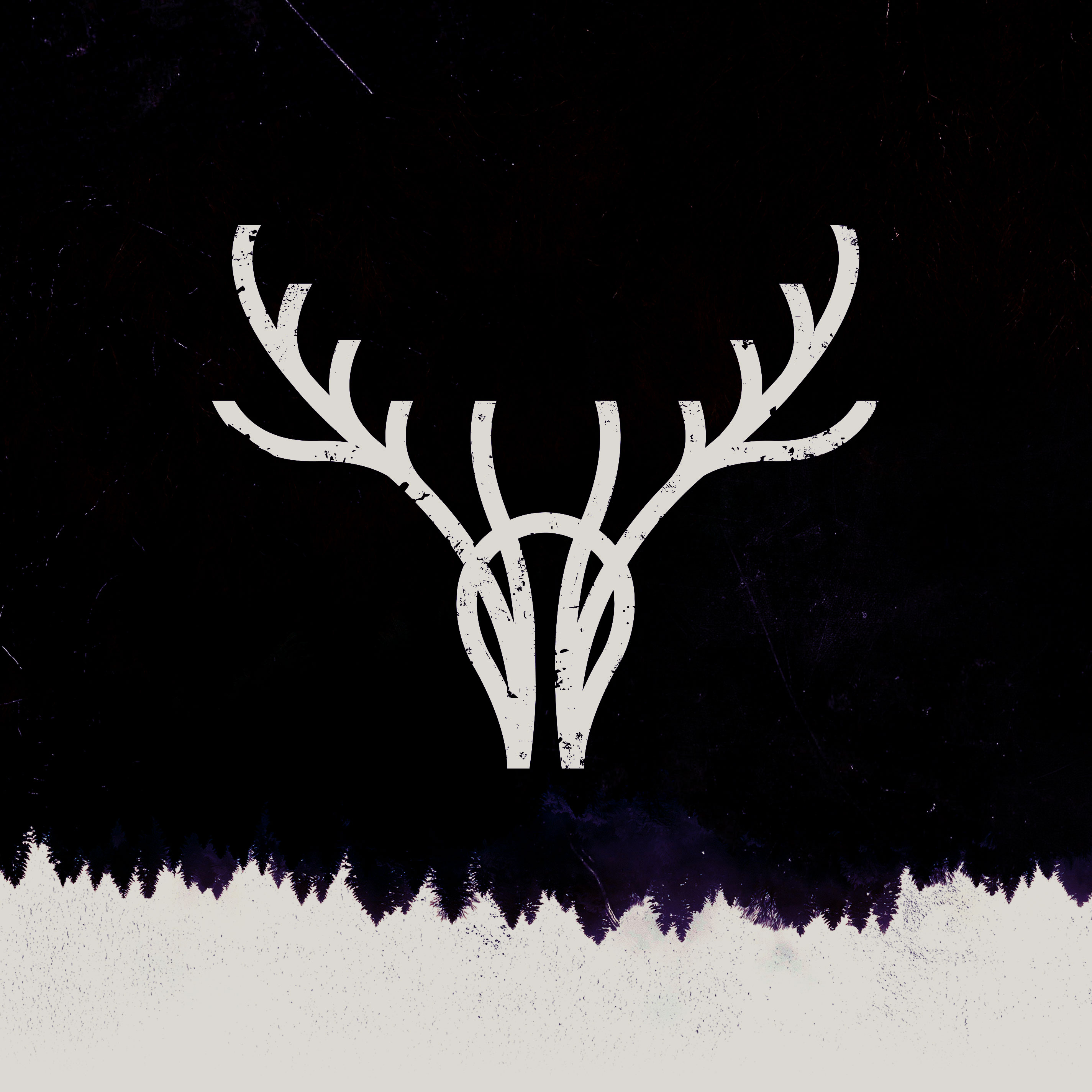
System Reference Document
Version 1.3

About Trophy
Trophy is a collection of collaborative storytelling games about doomed and desperate treasure-hunters entering a haunted forest that doesn’t want them there.
The games explore the physical, mental, and emotional descent of the treasure-hunters as they move deeper and deeper into the forest, encountering ancient ruins, terrible monstrosities, and the greatest horror of all: themselves.
Compatibility
Rather than creating your own game based on Trophy, you can simply design material that is compatible with existing Trophy games.
Licensing
The Trophy System Reference Document (SRD) contains the core mechanics of Trophy. The contents of the SRD are available for use under the Creative Commons Attribution 4.0 (CC-BY) License.
Requirements
Using this license requires you to say that your game is based on Trophy, and the works that Trophy itself is based on. To give proper credit, add the following after your own copyright, and in the same size as your copyright:
This work is based on Trophy (trophyrpg.com), product of Jesse Ross and Hedgemaze Press, and licensed for our use under the Creative Commons Attribution 4.0 License (https://creativecommons.org/licenses/by/4.0/). Trophy is adapted from Cthulhu Dark with permission of Graham Walmsley. Trophy is also based on Blades in the Dark (found at http://www.bladesinthedark.com/), product of One Seven Design, developed and authored by John Harper, and licensed for our use under the Creative Commons Attribution 3.0 Unported license (http://creativecommons.org/licenses/by/3.0/).
If you are publishing electronically, you can link the following phrases to their URLs instead of printing them separately:
- Trophy: https://trophyrpg.com/
- Creative Commons Attribution 4.0 (CC-BY) License: https://creativecommons.org/licenses/by/4.0
- Blades in the Dark: http://www.bladesinthedark.com/
- Creative Commons Attribution 3.0 Unported license: https://creativecommons.org/licenses/by/3.0
Using this license means that you cannot imply or state that Jesse Ross or Hedgemaze Press is endorsing or sponsoring you unless you have made a special arrangement with us. Don’t use the Trophy logo or the Hedgemaze Press logo without talking with us first. You may, however, use the “Rooted in Trophy” logo referenced below as long as you include the required text associated with it.
Additionally, using this license means that you cannot use any part of Trophy that is not included in the SRD, including names, people, and places relating to the world of Trophy and any of the artwork or graphic elements identified with Trophy.
We will eventually be releasing a licensing system which lets you publish material which refer to Kalduhr, Fort Duhrin, and other notable locations and people in the world of Trophy. In the meantime, you must create your own original material, building off of the Trophy SRD.
Rights
You are free to make a copy of this SRD in any format you wish, provided you include the original copyright notice found with this text, and don’t add any kind of copy protection. You are also free to create new works derived from the SRD.
You are free to create, distribute, and sell new works based on the material within the SRD.
Additional rights and requirements are detailed within the complete text of the Creative Commons Attribution 4.0 License.
Rooted in Trophy
If you would like to provide additional credit, you may use the phrase “Rooted in Trophy” to identify your game’s heritage. To make legal use of the “Rooted in Trophy” logo, you must include the following text:
Trophy™ is a trademark of Hedgemaze Press. The trademark and “Rooted in Trophy” Logo are © Hedgemaze Press, and are used with permission.

| Black Text Logo | White Text Logo |
| Download EPS | Download EPS |
| Download PDF | Download PDF |
| Download PNG | Download PNG |
| Download SVG | Download SVG |
Hacking Trophy
Foundation
Games rooted in Trophy are built around characters willing to push their luck. The character are often desperate, with something driving them to continue against all odds. The system itself encourages risk taking, so if your game isn’t about risks or characters who push themselves, then Trophy might not be the best foundation.
Trophy is also about decline. Characters tend to degrade over time, or have some precious resource that they’re gradually losing (or a negative resource that they’re gaining). If your game is about characters becoming more and more powerful, then you might want to try a different system.
Players & Characters
Players of Rooted in Trophy games take on the role of individual characters. These characters are very light mechanically, but very rich thematically. Their mechanical elements are:
- Skills
- Rituals
- Ruin
They tend to be good at a few things, which we call Skills. Skills are often single words or short phrases, like athletics or spirits. Importantly, having a relevant Skill gives a player an extra die during certain rolls, and may give them fictional permission to attempt something they would not otherwise be able to do.
In Trophy, the characters are treasure-hunters who have a few Skills provided to them by their Occupation (what they do now) and Background (what they used to be or do). Your game might not break up Skills the same way, but should provide some method for characters to be assigned Skills. You also might opt not to have Skills at all, but you will probably need some way to define what makes one character better at certain tasks than another. This is one of the ways we allow players and their characters their own individual moments to shine.
Because Trophy takes place in a fantasy setting, the characters have access to supernatural abilities called Rituals. Rituals should be renamed and rethemed to better reflect the setting of your game. Because using Rituals requires rolling risky dark dice, they are one of the ways that a character can increase their Ruin.
Ruin is a number between 1 and 6 which tracks a character’s descent. Nearly every roll that a player makes has a chance to affect their character’s Ruin. At 6 Ruin, a character is removed from play.
Dice
Games Rooted in Trophy tend to use two different colors of six-sided dice: light dice and dark dice. Light dice are typically less risky, whereas dark dice are typically more risky.
Players may make rolls using dice of just one type or the other, but it’s common to roll one or two of each during a single roll. The individual rolls (described below) will tell you which dice to use when.
Tokens
Some games Rooted in Trophy use tokens to track progress. These can be coins, glass beads, or some other type of counter.
SRD
Risk Roll
When you attempt a risky task, say what you hope will happen and ask the GM and the other players what could possibly go wrong. Then gather 6-sided dice.
 |
Take one light die if the task is something you would be able to do because of one of your Skills or piece of equipment. You only get one light die here, even if multiple Skills or pieces of equipment apply. If you don’t have any relevant Skills or equipment, then you cannot take this die. |
 |
Take another light die for accepting a Devil’s Bargain from another player or the GM. Devil’s Bargains are complications that happen no matter the outcome of the roll. You can only accept one Devil’s Bargain. See Devil’s Bargains below. |
 |
Add a dark die if you are risking your mind or body to attempt the task. You must include this die whenever you perform a Ritual, or if the GM declares that it applies. |
Roll the dice. If your highest die is a:
| 1–3 | You fail, and things get worse. The GM describes how, which may or may not be connected to one of the ideas offered when you asked what could go wrong. The GM may also allow you to succeed, but things will get worse in some other way. |
| 4–5 | You succeed, but there’s some kind of complication. The GM describes the complication, then you describe how you succeed, or vice versa. The complication may be connected to one of the ideas offered when you asked what could go wrong, but it doesn’t have to be. |
| 6 | You succeed. Describe how, or ask the GM to describe it. |
If your highest die is a dark die, and the dark die is higher than your current Ruin, mark 1 Ruin. When you mark your last Ruin, you are lost—see Losing Yourself below.
 |
If you are unhappy with your roll and your highest die is a light die, you may add a dark die to your dice pool and re-roll them all. You may keep adding a dark die and re-rolling until you’re satisfied with your result or until your highest die is a dark die. |
The Forest’s Rule
When dark and light dice are tied, the dark die is considered the highest.
Devil’s Bargains
When you gather dice to make a Risk Roll, the GM or any other player can offer you a bonus light die if you accept a Devil’s Bargain from them. Common Devil’s Bargains include:
- Causing collateral damage or unintended harm
- Getting lost or separated from your companions
- Sacrificing an item or piece of treasure
- Betraying another character
- Attracting unwanted attention
The Devil’s Bargain occurs regardless of the outcome of the roll. You make the deal, pay the price, and get the bonus die. The Devil’s Bargain is always a free choice. If you don’t like one, just reject it (or suggest how to alter it so you might consider taking it).
Anyone may veto or suggest alterations to a proposed Devil’s Bargain, especially if it would also impact their character. You may only offer and accept Devil’s Bargains when making a Risk Roll.
To streamline play during particularly tense moments (such as when using a Risk Roll while in combat), the GM may choose to allow only a single Devil’s Bargain to be offered. They can pick the player to make the offer, or may simply make the offer themselves.
Help Roll
If another player is making a Risk Roll that includes at least one dark die, you may offer help to improve their odds of success—either before or after they roll.
 |
If they accept your offer, say how you expose yourself to danger and roll one light die. |
They may include your light die’s result when considering their overall success. But if your light die’s result matches any of the dark dice in their roll, mark 1 Ruin. When you mark your last Ruin, you are lost—see Losing Yourself below.
You can only mark a maximum of 1 Ruin when helping on a roll. This is particularly relevant when a player re-rolls a Risk Roll. The helping player doesn’t re-roll their light die. However, you still mark 1 Ruin if any re-rolled dice show the same number as your light die (provided you haven’t marked 1 Ruin already due to this roll).
More than one player may offer to help, in which case each player rolls their own light die. The helped player can incorporate all of the light dice into their own Risk Roll.
Contest Roll
This roll manages situations where characters act against each other. Sometimes multiple characters are competing to be the first to an important item, are trying to achieve their own individual aims in opposition to their companions, or are aiming to inflict harm on one another. To engage in a contest, first agree on what’s at stake. Then each competing player gathers dice:
 |
Take one light die if the task is something you would be able to do because of one of your Skills or piece of equipment. You only get one light die here, even if multiple Skills or pieces of equipment apply. If you don’t have any relevant Skills or equipment, then you cannot take this die. |
 |
Take one light die for each mark of Ruin you currently have. For example, if you have 4 Ruin, you get 4 light dice. This is the haunted world giving you an advantage commensurate with how much it has dug its claws into you. |
 |
Take one dark die if the contest itself is inherently deadly or dangerous. |
 |
Take as many additional dark dice as you are willing to risk. |
Count all 6s you roll. Whoever has the most 6s wins the contest. In case of a tie, count 5s, then 4s, then 3s, then 2s, then 1s, until a winner is determined.
For each dark die in your roll that shows a 1, mark 1 Ruin. When you mark your last Ruin, you are lost—see Losing Yourself below.
Hunt Roll
The purpose of this roll is two-fold: to learn about the world, and to collect a meta-game currency called Hunt Tokens, detailed below.
When you press ever deeper in pursuit of a specific and immediate goal, say how you are exploring your environment, then gather 6-sided dice.
 |
Take one light die just for exploring the world and asking the GM questions about it. |
 |
Take another light die if you have a Skill or piece of equipment that would make your hunt easier. You only get one light die, even if multiple Skills or pieces of equipment apply. |
Roll the dice. If your highest die is a:
| 1 | You lose all your Hunt Tokens, and encounter something terrible. Only the player rolling loses their tokens, since tokens are gained and lost individually. |
| 2–3 | You encounter something terrible. |
| 4–5 | Take 1 Hunt Token, but you encounter something terrible. |
| 6 | Take 1 Hunt Token. |
The GM will provide answers to your exploration independent of the result of your roll. The quality of the answers and level of detail you receive correspond to the quality and specificity of your questions, not how well you roll.
The immediacy and danger of the terrible thing you encounter scales based on the highest die roll. A 1–3 means the encounter is present and threatening, such as a monster or trap. A 4–5 means the encounter is further away or not obviously dangerous, such as an ominous sound or the sudden appearance of a mysterious stranger.
Hunt Tokens
Hunt Tokens are a meta-game currency that allow players some narrative control. 1 token can be spent to find a treasure worth 1 Gold. Spending 3 tokens allows the character to achieve a goal. This is usually a Set Goal, but can be any goal, as long as the players and GM agree. Tokens are gained and lost individually, but can be pooled to use as a group. If a character dies, their tokens can be claimed as Gold by their companions.
Combat
Games can approach combat in multiple ways. For those that disallow or discourage it, use Fighting Monsters below. For those that allow or encourage it, use the Combat Roll below.
Fighting Monsters
The world is a dangerous one, filled with a variety of creatures capable of causing harm. These creatures can be divided into two groups: folk and monsters.
Folk include people—sometimes strange or magic-using people—and normal animals. They can be fought and removed from play through a successful Risk Roll.
Monsters are something else. They cannot be defeated by mere folk like the characters. If you attempt a Risk Roll to incapacitate or kill a monster, you will die. Instead, roll to hide, roll to escape, or roll to use a Ritual against it. If you fight something that is not monstrous or if you fight a monster without an intent to defeat it (for example, to fight your way past it), say what you want from the fight, then roll normally.
Combat Roll
When you attempt to defeat a monster, you may combine efforts with the other characters.
 |
First say how you expose yourself to injury or attack, then roll a single light die. The number on the die is called your Weak Point, and represents the risks you’re taking to face the monster. If multiple characters are involved, each rolls their own die. |
 |
Now gather a dark die for each character involved in the attack. Roll all the dark dice together. |
Say what weapons you’re using against the monster, then roll all the dark dice together.
To defeat a monster (or group of monsters), you must roll against the monster’s Endurance, which is a number between 2 and 12. The GM may reduce the Endurance if you have relevant Skills or are taking advantage of your equipment, environment, or any Weakness the monster has. If the Endurance would go below the number of dark dice being rolled, then no Combat Roll is required. The GM may increase the Endurance if the monster is particularly tough, if there are multiple monsters present, or if you are at a disadvantage. If the Endurance would go above 12, the monster is too difficult to fight and you must retreat or find a way to reduce the monster’s Endurance.
If the total of the two highest dark dice is equal to or higher than the Endurance, the monster is defeated in the manner you and your fellow players describe. You may now collect any Gold from the monster.
If any of the dark dice equals your Weak Point, your character’s Ruin increases by 1 for each dark die matching the Weak Point. You can choose to mark a piece of your armor to ignore all Ruin increases for your character during a single roll. Describe how your armor absorbs the hit to protect you. Marked armor is unusable until you safely return to town.
At this point, if a player wants their character to retreat, that player must hand their Weak Point light die over to another player, who now suffers if either their original Weak Point number or the new number comes up during a re-roll of the dark dice. If both light dice show the same number, the character must re-roll one of the dice to get a different number. A character who retreats in this manner can do so without triggering a Risk Roll or any other consequences for themself. The number of dark dice rolled never goes down, even when a character leaves the fight.
 |
If the two highest dark dice are less than the monster’s Endurance and you wish to continue the attack, add one more dark die and re-roll all the dark dice. You may keep adding a dark die and re-rolling until you defeat the monster, or until all characters give up the fight or die. Keep in mind that each re-roll increases the odds of your own Ruin going up. Retreating as a group from an incomplete fight may trigger Risk Rolls or other consequences. |
Ruin Roll
Your Ruin shows how much physical and mental harm your character has suffered. It starts at 1.
When your character witnesses or undergoes something disturbing, make a Ruin Roll by rolling one dark die. If you’ve made a Risk Roll which includes a dark die, and that die is equal to or higher than your highest light die in that roll, your dark die is automatically considered a Ruin Roll.
If you rolled higher than your current Ruin, increase your Ruin by 1 and work with the GM to describe how the your mind and body become warped.
Reduction Roll
When you mark 5 Ruin, you may now reduce it by betraying or sabotaging the other characters. You should do these acts in a way that does not draw attention to yourself. The more it looks like an accident or simple bad luck, the better.
 |
Each time you act against the group, roll one light die. |
If you rolled less than your current Ruin, your betrayal goes unnoticed and you remove 1 Ruin. If you rolled equal to or higher than your Ruin, you decide whether or not to remove 1 Ruin. If you do, someone notices the attempted betrayal—otherwise, your attempt goes unseen.
You may continue reducing your Ruin in this way when your Ruin drops below 5, until you are back at your starting Ruin. Your Ruin can never go below the amount you start the game with.
Conditions
Conditions are physical and mental transformations you undergo when your Ruin goes up. When you mark Ruin as the result of a Risk Roll, Help Roll, Contest Roll, Ruin Roll, or other custom roll, the GM will offer suggestions for Conditions, but you can work with them to determine exactly how you are affected. Example Conditions include:
- Sprained ankle
- Slowly becoming petrified
- Thinks companions have been body-swapped
- Black-and-white vision
- Possessed by a ghost
Losing Yourself
When you mark your last Ruin—meaning all 6 Ruin boxes are marked—you lose yourself to the wilds that have been growing inside you. You choose whether you become a monster in service to the forces of nature (and the whims of the GM), or whether you simply die. This is an important moment: Everyone focuses on your last actions before you run screaming into the shadows, turn violently against the other characters, or take your final breath.
The GM may allow you to take on a co-GM role, helping describe the terrors of the world—especially any terrors that directly connect to your now-lost character.
Download
Download the SRD in plain text format.
Contact
Do you have questions about this document?
